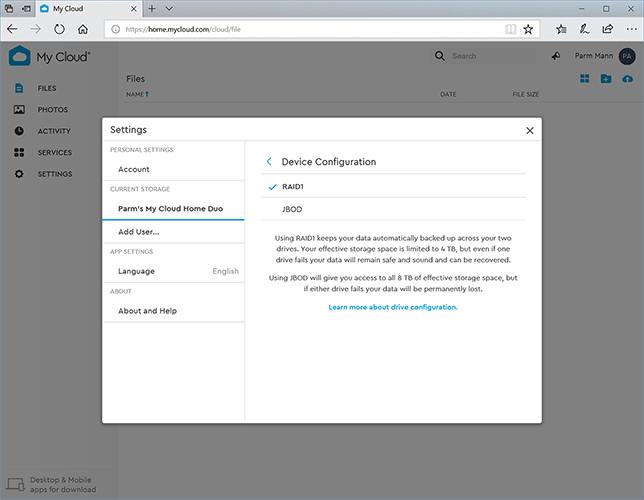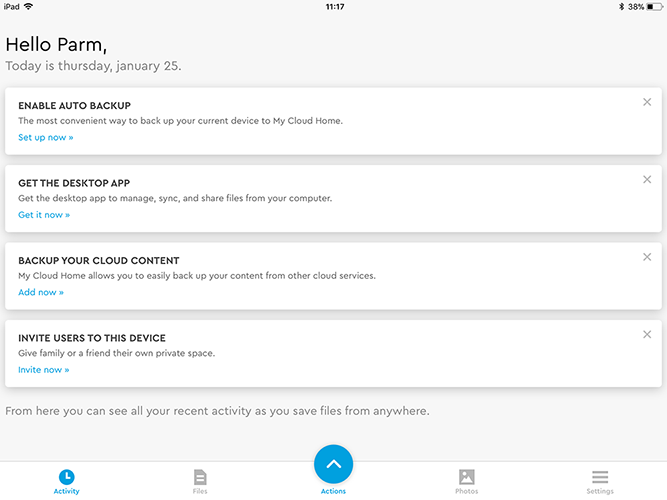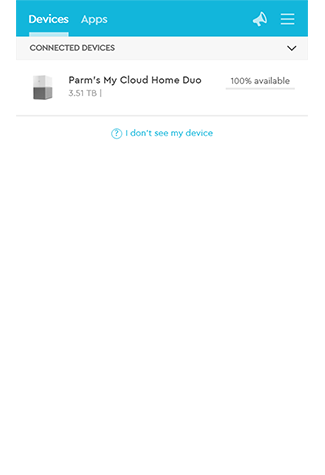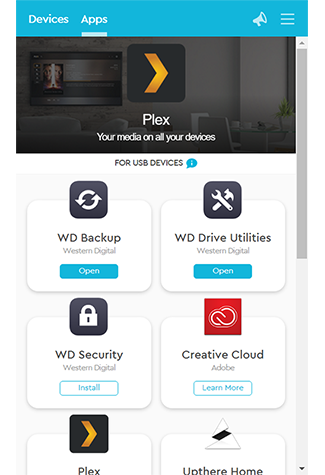Not Your Typical NAS
Anyone accustomed to a more traditional NAS will immediately find the My Cloud Home to be limited in functionality. By default, the Duo is configured in RAID 1, giving our 8TB review sample 4TB of usable space and protection against a single disk failure. There is an option to switch to JBOD for maximum storage without a protective mirror, but there's no love for performance-optimised RAID 0. Similarly, a lot of the functions a power user would come to expect on a NAS are conspicuous in their absence. Want to configure a power schedule? You can't. Need a download manager? You're out of luck. Or how about something as simple as shared folders for multiple user accounts or groups? No, sir.

My Cloud Home Duo: limited configuration options
In fact, My Cloud Home Duo can't be accessed from a desktop without installing the WD Discovery software and logging in. Our attempts to map the drive manually proved fruitless, but we clearly aren't the target audience. For mainstream users, WD Discovery is a lightweight and neatly presented app that automatically assigns My Cloud Home as Drive Z, and let's face it, how many casual users want to be remembering IPs or network addresses? The assigned drive acts as any other storage device, allowing for data to be dragged and dropped with ease, and WD Discovery adds a Sync option to context menus, allowing folders on the PC to be synchronised with no fuss.
Streamlined Yet Hamstrung
The same basic rules apply on mobile devices. Install the relevant app on Android or iOS and My Cloud Home can automatically backup your files - handy for keeping a copy of your smartphone photos - while providing access to all your data from outside the home. The core functions work well, yet there are plenty of limitations to be aware of. Although it is possible to invite other users, they are each given there own storage folder and, as far as we can tell, there is no method of sharing permissions with others, meaning you can't maintain a single pool of movies for all the family. You can generate a share link for specific folders, but this only provides others with read access and, while useful, isn't a genuine alternative to user-specific permissions.
Another bizarre limitation is the way in which the USB ports work. Right now, they can only be used to copy data from an external drive onto the My Cloud Home. That one-way access means that backing up to an external device is a no-go. That's right, you can't currently attach a drive and backup all of your content. We don't recall ever seeing a network storage solution with this restriction.
Software Snags
If you do want to copy data from a USB drive, it doesn't appear to be possible from the Windows desktop or web-based interface, where the USB device is nowhere to be seen. The only option we've found is to load the mobile app, which does recognise a USB connection, and choose copy data. Is the mobile app therefore the best bet? Not quite as surprise limitations also exist on iOS; there's the ability to upload photos or videos from your iPad or iPhone, but not any other file type, including music or documents.
Confounding these issues, the WD Discovery desktop software also advertises a suite of useful-sounding apps such as WD Backup or WD Drive Utilities. Following the links to download and setup such apps only reveals that they are not compatible with My Cloud Home and function only with WD's USB-based storage solutions. A NAS usually has a built-in suite of apps to cover most bases, but My Cloud Home doesn't include a DLNA or iTunes media server, and though Plex integration is present, we found it coped with small videos but struggled to serve larger files across our network without stutter.












